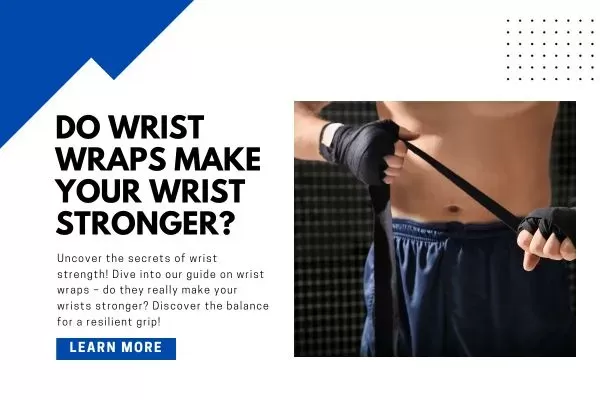
Wrist strength is often underestimated, yet it plays a crucial role in various activities, from lifting weights in the gym to performing daily tasks. It's no surprise that individuals seek ways to enhance wrist strength and one popular accessory that claims to do just that is the wrist wrap. In this article, we'll delve into the mechanics of wrist strength, the role of wrist wraps, and whether they genuinely contribute to building stronger wrists or if they primarily offer support.
To appreciate the role of wrist wraps, it's essential to comprehend the mechanics of wrist strength. The wrist is a complex joint comprised of various bones, ligaments, and tendons. Weak wrists can lead to discomfort, reduced performance, and even injury. Common issues associated with weak wrists include sprains, strains, and conditions like carpal tunnel syndrome. Strengthening the wrist involves targeting the muscles and structures that support and control its movement.
Wrist wraps function as external support for the wrist joint, particularly during heavy lifting or activities that exert pressure on the wrists. They provide compression and help limit excessive movement, reducing the risk of injury. However, the question remains: do wrist wraps actively contribute to building stronger wrists, or are they primarily a preventive measure?
Many fitness experts, athletes, and trainers swear by the positive impact of wrist wraps on wrist strength. According to renowned strength coaches, wrist wraps allow individuals to lift heavier weights while maintaining proper form. The wraps provide the necessary stability, allowing increased focus on the targeted muscles without compromising the wrists. Athletes who engage in sports involving repetitive wrist movements, such as boxing or gymnastics, find wrist wraps instrumental in preventing overuse injuries.
Personal anecdotes also highlight the efficacy of wrist wraps. Sarah, a powerlifter, shares, "I noticed a significant improvement in my wrist strength after incorporating wrist wraps into my routine. I could push my limits without worrying about wrist discomfort, and over time, my wrists felt more resilient."
Despite the support for wrist wraps, skepticism exists within the fitness community. Some professionals argue that relying on external support, such as wrist wraps, might hinder the natural development of wrist strength. A sports medicine specialist, Dr. Amanda Turner, suggests, "While wrist wraps can provide immediate relief and support, relying on them exclusively may neglect the underlying issue. Addressing weaknesses through targeted exercises is crucial rather than relying solely on external aids."
A balanced perspective acknowledges that wrist wraps might not suit everyone or every situation. For those with pre-existing wrist conditions, wraps can be a valuable tool in preventing further damage. Still, they should not replace a comprehensive approach to wrist strength, including exercises that target the muscles and improve overall joint stability.
Understanding proper usage is paramount for individuals considering or already using wrist wraps. Wraps should be snug but not overly tight, allowing for adequate blood flow. They should cover the wrist joint and extend slightly onto the forearm. When using wrist wraps during exercises, it's essential to maintain proper form and not solely rely on the wraps for support. Incorporating wrist-strengthening exercises alongside wraps can strike a balance between support and natural development.
While wrist wraps are popular, alternative approaches exist for enhancing wrist strength. Specific exercises targeting wrist flexors and extensors, such as wrist curls and reverse wrist curls, can be incorporated into a workout routine. Yoga and mobility exercises focusing on wrist flexibility and strength can contribute to overall wrist health. Exploring these alternatives alongside or in rotation with wrist wraps allows for a more holistic approach to wrist strength.
The answer lies in balance in the debate over whether wrist wraps make your wrist stronger. Wrist wraps can be valuable in enhancing wrist strength, providing support, and preventing injuries. However, they should complement, not replace, a comprehensive approach that includes targeted exercises and alternative methods to promote overall wrist health. Ultimately, the effectiveness of wrist wraps depends on individual needs, preferences, and the specific demands of one's fitness routine.